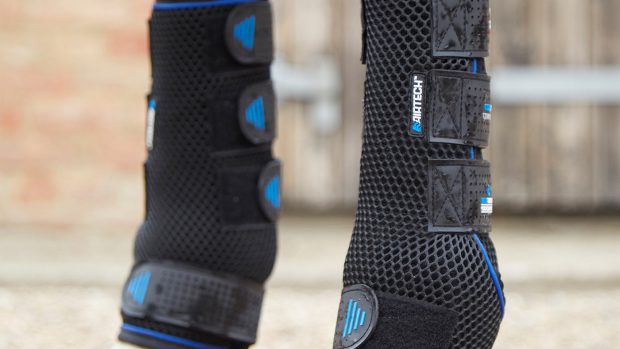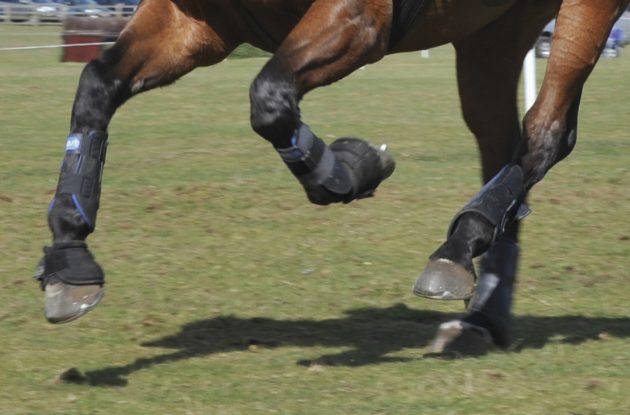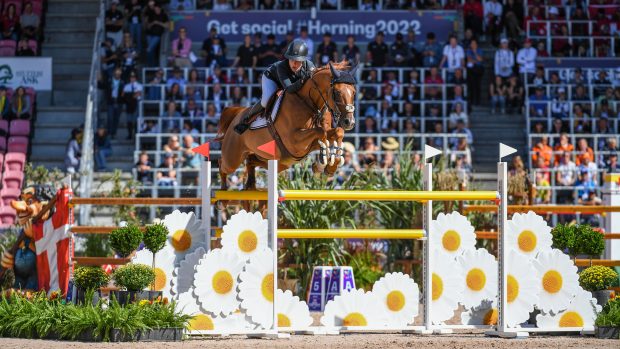A tendon injury is a devastating blow for horse owners. Professor Roger Smith, European and RCVS recognised specialist in equine surgery at the Royal Veterinary College, says that tendons can be injured in two ways. Firstly they can become damaged through external trauma such as a blow or a laceration and secondly and most commonly, as a result of over-loading.
But as we begin to understand more about the causes and consequences of tendon injury, should also become more discerning about the treatments we employ?
Here are few facts about treating tendon traumas that may surprise you:
1. Long periods of box rest aren’t appropriate.
“There is a gold standard of treatment for tendon and ligament injuries,” says Roger. “We believe managing tendon injuries with long periods of complete box-rest or ‘field rest’ is not appropriate.”
Below are the suggested time guidelines for a rehabilitation programme for common tendon and ligament injuries. (These time-lines should only be used as a guide and can be modified depending on clinical progress, as judged by your veterinarian and with the use of ultrasound).
| Structure injured | Walking exercise | Trotting exercise | Canter exercise | Total time out of work |
| Superficial (and deep) digital flexor tendon | 3-4 months | 5-6 months | 3 months | ~12 months |
| Suspensory ligament | 2-3 months | 3-4 months | 1-2 months | 6-9 months |
| Accessory ligament of the deep digital flexor tendon | 2-3 months | 1-2 months | 0-1 months | Minimum of 3 months out of work and without turn-out.
Up to 6 months out of work |
2. New treatments should be approached with care
“The main limitation for a vet is knowing whether these new treatments will actually work,” continues Roger. “This requires data from clinical cases which can be hard to collect in meaningful numbers. As an illustration of this, a statistical calculation (known as a ‘power calculation’) was made a few years ago to estimate the numbers of horses that would have to be treated using a new treatment to show a significant improvement in outcome for superficial digital flexor tendinitis of a 50% reduction in re-injury rate, and this was 88 horses per group (see ‘Consensus on equine tendon disease: building on the 2007 Havemeyer symposium’ [1]). Consequently, few tendon treatments offer the same kind of confidence that we expect from most human treatments. With new treatments, this will inevitably be limited and so should be approached with caution — we should not be using treatments with no evidence base, especially if it causes harm (or pain) to the horse.”
3. Firing tendons is ineffective
Roger also says that ‘well-established’ treatments which do not show positive effects should be abandoned:
“A good example of this is the firing of tendon injuries, where large studies have shown it to be ineffective and no studies show positive results even after many years of use, and for which significant welfare issues exist for many. Therefore, adoption of new (and established) treatments for a tendon injury should require careful consideration relating to the principles outlined above, the evidence for its use, and, most importantly, discussion with your veterinarian who is best placed to help you decide whether it is appropriate or not.”
4. Sudden bouts of exercise can bring out an underlying injury
Roger says the most common injuries affecting the superficial digital flexor tendon and suspensory ligament are thought to arise through accumulated microdamage.
“While cyclical loading is important for a healthy tendon and drives the development of a strong and resilient tendon in the young growing animal, it results in accumulated microdamage in the adult (post 2-3 years of age), similar to repetitive strain injury, which weakens the tendon so that a bout of intense exercise when ridden or in the field can result in an apparently sudden injury.”
Article continues below…
You might also be interested in:

Suspensory ligament injuries: what owners need to know

Subscribe to Horse & Hound magazine today – and enjoy unlimited website access all year round
5. Prevention or cure?
“Research continues to identify key mechanisms behind early subclinical ‘degenerative’ phase which actually offers an opportunity to intervene as a preventative approach,” says Roger. “Two possible preventative approaches stem from this understanding – (i) improving the tendons resilience to injury during its competitive life-span by enhancing its development. This is most likely to be achieved by optimising ‘conditioning methods’ for young stock (figure 2); and (ii) slowing or stopping the degenerative process in the adult.”
An example of this is the work currently being done on developing methods that counteract the process of cellular ‘ageing’, thought to be behind many age-related degenerative diseases in humans.
For all the latest equestrian news and reports, don’t miss Horse & Hound magazine, out every Thursday. Don’t miss this week’s vet special (18 April) to read the full feature on tendon injuries, and how new research is changing the way we treat them.





